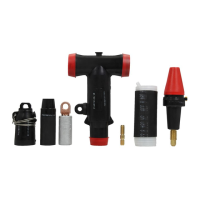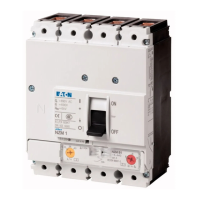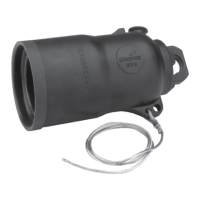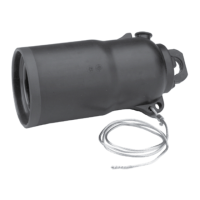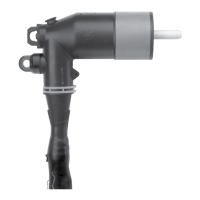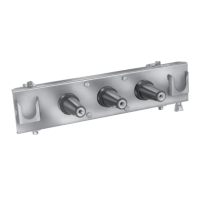Digital SCADA
Refer to the Advanced Control Features section for
information on communications and physical interface.
Local operator security
Through the communications channel, the SCADA master
may read the CL-6 control data points, write to certain data
points, or reset certain data points. The technique of writing
to a data point is used for performing operations such as
changing settings like Set Voltage or Reverse Power Mode,
inhibiting automatic operation, or controlling the tap-changer
motor, etc. Following is a discussion of the levels of security
used to protect the local operator.
Supervisory switch
The CL-6 control is equipped with a Supervisory On/Off
switch. When this switch is in the on position, SCADA may
perform the normal read, write, and reset activity. When
the switch is in the off position, SCADA may only read the
database. This affords protection to the local operator at the
front panel, while allowing the system operator to maintain
surveillance.
Control switch
If the local operator switches the control switch (Auto/
Remote-Off-Manual) to either Off or Manual, the control
internal circuitry prohibits SCADA from controlling the tap-
changer motor. Resets and other writes are allowed.
Active control security level
If the local operator changes the control active security level
to level 1 or above, or security override is set to override 1
or higher, this does not inhibit any SCADA activity. To inhibit
SCADA writes and resets, the local operator should turn the
Supervisory switch to Off.
Note: A local operator wishing to check automatic operation
should check to make sure that the Blocking Status,
FC 69, is set to Normal.
Note: Changes to any of the communications parameters take
effect immediately, as compared to the CL-4C control
which required that the power be turned off, then on,
to reset those parameters on the separate protocol
communications board.
Analog SCADA
The CL-6 control can be used with Analog SCADA systems.
Discrete inputs 1 through 3 have been programmed by
default for use as inputs for voltage reduction and Tap-to-
Neutral. The back panel has provisions for remote motor
control, auto-inhibiting, and transducer connections.
Discrete voltage reduction
During voltage reduction, the control remains in the
Automatic mode. See Figures 6-13 and 6-14 for the location
of the physical connections. For either of the two modes,
Remote Latching and Pulse, a nominal 120 Vac needs to
be supplied to either or both discrete inputs 1 and 2 (pins
10 and 11, respectively). Discrete inputs 1 and 2 have been
configured as voltage reduction inputs 1 and 2 by default.
The user may modify this configuration; see the Advanced
Control Features: Programmable Input and Output
section of this manual.
If the user supplies dry contacts, the voltage should be
obtained from Pin 14 of the discrete I/O port. This whetting
voltage is only available when the control switch is in the
Auto/Remote position. If the user supplies whet contacts,
the connections should be as shown in Figure 6-13.
Analog remote/latching mode
This feature is set at FC 70. Up to three independent values
of voltage reduction (VR) are possible. Levels 1, 2, and 3 are
programmed at FC 73, FC 74, and FC 75, respectively. VR 1
activates the VR programmed at FC 73; VR input 2 activates
the VR programmed at FC 74; and latching both contacts
activates the VR programmed at FC 75. Each of these
function codes may be set from 0.1 to 10.0%.
85
CL-6 SERIES CONTROL INSTALLATION, OPERATION, AND MAINTENANCE INSTRUCTIONS MN225016EN January 2016

